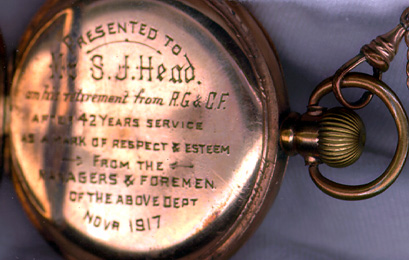The Arsenal was not just about the manufacturer of guns and projectiles, for the worlds largest Empire. It was also one of the worlds top scientific establishments of the day. Driven by the needs of the military. In their need to change from direct to indirect firing guns. And replacement of the horse.
http://harveian.blogspot.co.uk/2009/02/firepower-quantum-leap.html
............................unedited
In having the most dominant firepower, artillery has long been the "Queen of the Battlefield", but its reign began to falter towards the end of the 19th Century, when infantry weapons made enormous steps forward in their rate of fire, range and accuracy. Up to that point, artillery had by far the longer range and, in addition to cannonballs and explosive shells, it could deliver punishing salvos of cased shot (canister) at infantry and cavalry targets long before they could retaliate with their own weapons. It remained vulnerable to enemy artillery, of course, but that was true of both sides, and artillery tended to devote most of its effort towards reducing the enemy's infantry and cavalry forces.
This new infantry firepower had the effect of driving field artillery back from the front line: it was too valuable a resource to leave it in positions where gunners and horses could be picked off by skilled riflemen. After moving out of range of the infantry weapons, it still had the dominating firepower, but the field guns of that period had to be able to see their targets. Frequently these targets were out of sight and guns had to be layed for indirect fire: this brought about a whole new era of change.
But the gunner first needed to know where the target was, so someone had to be far enough forward to be able to see it and to pass that information to the gun position. In addition, he had to act as an observer of the fall of shot when the target was engaged, so that corrections to the aim could be given. Some means had to be found of pointing the guns at their 'invisible' target. This was resolved by using maps with a grid system that allowed guns and their targets to be plotted accurately. This enabled bearing (direction) and range to be measured, so that this information could be used to point the guns and to set the correct elevation.
A forward observer was not able to communicate with the gun position unaided, so signalling systems had to be developed to pass orders and corrections between them. Signal flags (semaphore), heliographs and telephones were stages in the progress towards radio communications - all unnecessary, of course, in the days when guns were in the front line.
New instruments were needed on the guns, too. A means of sighting the gun, using a simple form of theodolite and compass, meant that guns could be reliably pointed at any required bearing. The correct range was set using data from range tables coupled with a form of gunner's quadrant. Sighting systems that were initially rudimentary soon became quite advanced, thanks to the technical skills developed in other branches of artillery, such as coast guns.
The combination of these changes freed field artillery from the space constraints of the front line, where there was insufficient room for more than a few guns per battalion of infantry. Suddenly there was an enormous amount of room, since guns soon had enough range not only to clear their own front line and hit the enemy, but also to hit targets well behind the enemy's front lines.
By the time of the Great War in 1914, most of the problems of indirect fire had been ironed out and artillery was being massed to provide devastating firepower, vastly more than had ever been envisaged in the days of direct fire. It was truly a quantum leap and maintained the old tradition of "Queen of the Battlefield".
Firepower - A Quantum Leap FRIDAY, 27 FEBRUARY 2009
-----------------------------------------


 IWM Q27846
IWM Q27846
 First published in 1995
First published in 1995






 CROOKS, Will(06Apr 1852-05Jun 1921)
CROOKS, Will(06Apr 1852-05Jun 1921)







